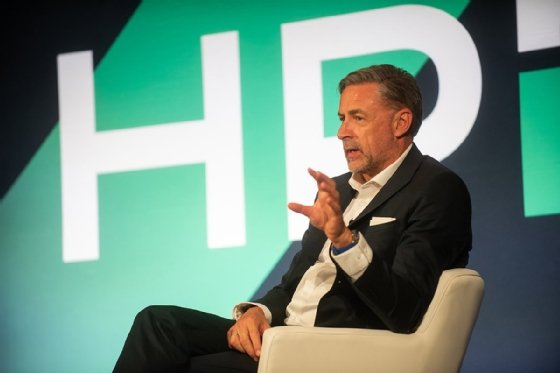HPE's Mottram touts key Aruba Networking AI advancements
The infrastructure company is injecting AI throughout its business, including its networking arm, which will harness the power of agentic AI.
LAS VEGAS -- HPE's response to booming artificial intelligence development fueled most of its new offerings at Discover 2025, including to its Aruba Networking Central platform in the form of agentic AI.
Phil Mottram, executive vice president and general manager of HPE Aruba Networking, said adding agentic mesh technology -- a network of interconnected AI agents -- and a copilot to Aruba Networking Central will create networking efficiency.
"The analogy we're using with customers is having an extra set of free network admins sitting alongside you," Mottram said during a press briefing. "[Customers] are going to be able to get to know the platform and trust the platform to make decisions for them."
HPE said customers will access agentic mesh technology through a multimodal copilot to provide automated root-cause analysis and remediation for network problems and security issues.
Ron Westfall, an analyst at HyperFrame Research, said HPE's agentic mesh alongside GreenLake Intelligence could prove to be a serious challenge for competitors. "HPE GreenLake gives HPE Aruba Networking Central's agentic mesh a leg up against chief rival Cisco in private cloud and hybrid cloud environments where Cisco lacks a direct GreenLake counter," he said in an email interview.
Cisco, however, might have the early advantage with a head start on demos for its Deep Network Model, an LLM built for network operations, and AI Canvas, a framework and tools to deploy AI throughout cloud environments. Both products launched at last month's Cisco Live.
"The battle royale between HPE's agentic AI mesh and Cisco Agentic OS/AI Canvas is swiftly percolating," he said.
Adding agents to the team
Mottram said the AI agents aren't meant to replace network administrators but to add to their toolkit.
"This isn't the case of, 'I've got 20 network admins and I want that number to be 15' … That's not the way to look at these sorts of scenarios," he said. "What they do look at is, 'I've got these 20 network admins, and the number of security threats just continues to rise all the time' … having a platform that can help reduce workload on those 20 network admins so they can focus on the security … it just makes it easier for people to be able to manage the network."
He said that a network administrator faced with a problem can now speak with an AI agent to solve that problem in a conversational way. "It will interpret that, and then it will filter out and say, 'these look like security concerns.' Then [the agents] can flag some resolutions."
HPE's competitors are also quickly moving toward adding agentic AI to networking. Cisco released several AI tools this year, and Juniper's Mist AI platform offers a virtual assistant. HPE's proposed $14 billion acquisition of Juniper will likely move forward after the company reached a settlement with the U.S. Department of Justice over an antitrust lawsuit.
During his keynote speech, HPE CEO Antonio Neri highlighted Aruba's new agentic capabilities, saying, "these AI agents leverage a collection of reasoning models… think of them as an extra admin team that never sleeps, never eats… [is] always working for you. The result is a network that thinks for itself, autonomously identifying problems, offering solutions and getting smarter over time."
In an interview, Larry Lunetta, HPE's vice president for AI, security and networking product marketing, outlined more agentic AI mesh benefits for customers.
"These are very bespoke, specifically designed and focused agents that sit inside the network and look at specific parts. … the reasoning agent will determine a problem and recommend a fix, all before any administrator interacts with the system."

Wi-Fi 7 and other networking upgrades
HPE also launched a new series of access points supporting Wi-Fi 7, which will double IoT capabilities using Bluetooth Low Energy 5.4 or 802.125.4/Zigbee radios and dual USB interfaces, which the company says will improve location precision for asset tracking and inventory tracking, among other use cases.
"These advancements bring improved speed and reliability to both wireless and wired networks in the data center, offices, retail spaces and hospitality outlets, as well as challenging locations like stadiums, warehouses and industrial sites," Neri told the crowd gathered at the Sphere for his keynote.
Shane Snider, a veteran journalist with more than 20 years of experience, covers IT infrastructure at Informa TechTarget.








